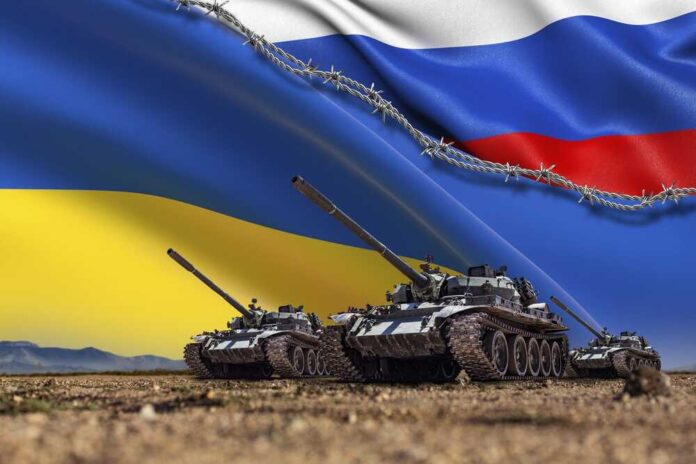According to Yevhen Dykyi, an experienced veteran of the Russo-Ukrainian conflict and former leader of the Aidar battalion, the Russian armed forces are increasingly facing problems with their military hardware. In a February 1 interview with Radio NV, Dykyi pointed out that Russia’s military hardware is being depleted at a faster rate than its personnel, despite suffering significantly higher losses compared to Ukraine.
Dykyi emphasized that in the areas where the Russian forces are on the offensive, such as Slobozhanshchyna, Maryinka, Avdiivka, north of Vuhledar, and attempting to attack Krynky, there is a significant number of armored vehicles going up in flames. What’s notable is that the rate of destruction surpasses their ability to promptly replace them on the front lines.
One critical example Dykyi provided was tanks, which Russia hasn’t manufactured domestically for the past three decades. Unlike drones, which can be assembled using civilian components, tanks require specialized components that cannot be substituted with parts from civilian vehicles like Ladas. Consequently, their defense industry, including Uralmashvagonzavod, only produces around 20 new vehicles per month and relies on approximately 50 more vehicles retrieved from storage warehouses.
Dykyi also mentioned the reactivation of T-54 and T-55 tanks from Russian warehouses. He pointed out that these tanks were originally adopted in the double-digit index year, indicating their age. The tanks from the 1980s have already been destroyed, and now tanks from the 1960s are actively burning, with tanks from the 1950s being deployed as replacements.
According to Dykyi, information from OSINT analysts, such as Oryx, suggests that while 70 Russian tanks are sent to the front lines monthly, Ukrainian forces destroy an average of 100 to 150 tanks per month, with an average of 120 tanks burned. The situation with Russian artillery is even worse, as their production falls short of demand. Russian Defense Minister Sergei Shoigu has expressed frustration with the management of a defense plant for failing to meet the goal of producing self-propelled artillery systems at a normal pace by 2022. Prior to the war, the plant produced around ten new self-propelled artillery systems annually.
Additionally, Ukrainian forces have managed to render a considerable amount of Russian artillery inoperable, with barrels wearing out and exploding. Dykyi noted that the issue has worsened with the arrival of Korean shells, speculating that the combination of worn-out barrels and powerful Korean ammunition contributes to the problem.
Dykyi also observed the unconventional use of equipment on the front lines, such as army tractors with makeshift bulletproof armor and gun turrets welded on top, reminiscent of tactics employed during the siege of Leningrad.
The significant toll on the Russian military is further highlighted by reports from CIA Director William Burns, who stated that Russia has suffered at least 315,000 casualties, including killed and wounded soldiers, and lost two-thirds of its pre-war tank inventory since the start of the full-scale invasion. Forbes also reported that during the conflict, Russia lost a minimum of 2,619 tanks, accounting for approximately 90% of their total tank stockpile.














